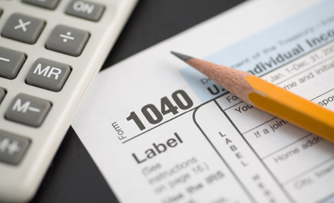Getting Ready for 2015

A new tax year is set to dawn shortly and recently released cost-of-living adjustments can help you plan for 2015. Due to low inflation, increases in the tax brackets and other tax items are minimal; some limits will not change from 2014 amounts.
Tax brackets
The tax brackets for all filers have been increased slightly, which means you can earn more income before being pushed into a higher tax bracket. As a result, single filers are eligible for the zero tax rate on long-term capital gains and qualified dividends if taxable income does not exceed $37,450 ($74,900 for joint filers). This compares with $36,900 and $73,800, respectively, for 2014. The tax rates for 2015 are unchanged at 10%, 15%, 25%, 28%, 33%, 35%, and 39.6%.
The kiddie tax for 2015 is triggered when a child under 19, or 24 if a full-time student, has net investment income over $2,100, compared with $2,000 in 2014. Once this limit is exceeded, then the child pays income tax on investment income at the parent’s highest tax rate.
Standard deduction
For 2015, the basic standard deduction is $12,600 for joint filers and surviving spouses (up $200 from 2014), $9,250 for heads of households (up $150), and $6,300 for singles (up $100).
The additional deduction for being 65 or older or blind is $1,250 for joint filers (up $50) and $1,550 for singles (unchanged). For taxpayers who can be claimed as a dependent, the basic standard deduction is the greater of $1,050 (up $50), or $350 (unchanged) plus earned income.
The adjusted gross income (AGI) threshold for the phase-out of itemized deductions has been increased. Taxpayers with AGI over this threshold amount can lose up to 80% of their itemized deductions.
Personal exemption
The 2015 personal exemption for a taxpayer, spouse, and each exemption is $4,000 (up from $3,950 in 2014). The deduction for exemptions phases out for high-income taxpayers. The threshold for determining a high-income taxpayer, which is based on filing status, increases slightly for 2015.
Medical items
Premium tax credit. The refundable credit to help individuals pay for health coverage started in 2014. For 2015, adjustments have been made to the tax imposed for excess advance credit payments.
Flexible spending accounts (FSAs). The maximum elective deferral by employees as contributions to medical FSAs in 2015 increases to $2,550 (up $50 from 2014).
Long-term care insurance. The maximum amount of premiums taken into account as a qualified medical expense depends on your age at the end of the year. The amounts for all ages have been increased slightly. For example, for those over age 60 but not over 70, the limit for 2015 is $3,800 (up from $3,720 in 2014); the limit for those 70 and older is $4,750 (up from $4,660).
Conclusion
These are just some highlights of changes to tax items that may apply to you. Reviewing them now can help you start planning for 2015.



